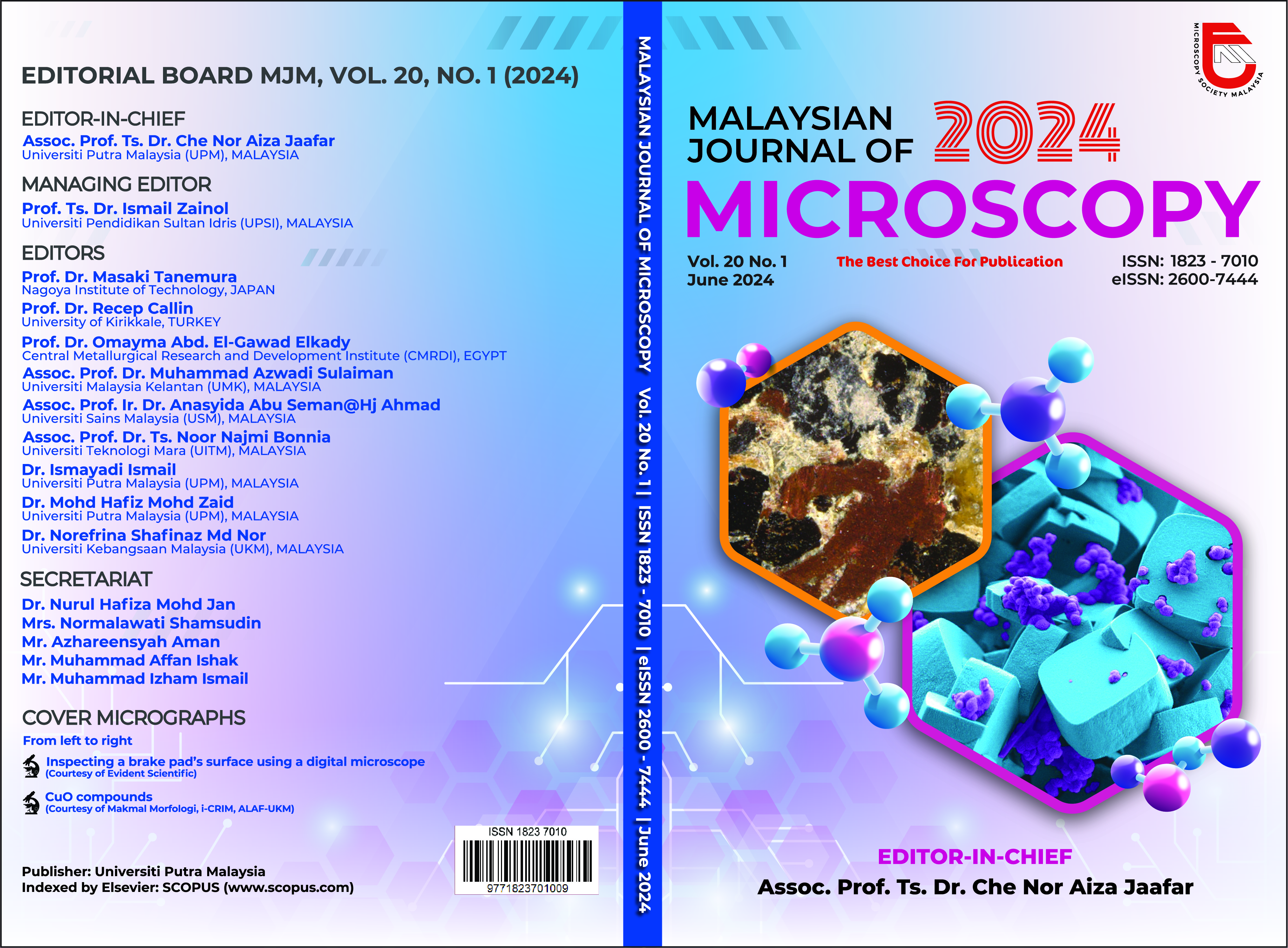CHARACTERIZATION OF POTENTIAL WEATHERED REE BEARING GRANITOID FROM HULU LANGAT, MAIN RANGE GRANITE, PENINSULAR MALAYSIA
Abstract
Rare earth elements (REEs) have become essential minerals in contemporary society, akin to petroleum. Their demand is particularly pronounced in various sectors, notably in electronics and green technology. In Malaysia, the prevalence of granitoid and intrusive volcanic rocks presents an opportunity to fulfil the demand for REEs in industries and among the population. Previous studies suggest that Malaysia's S-type granite is notably enriched in yttrium. Consequently, this study aims to scrutinize the mineralogy of potential ion adsorption clay deposits based on their physical and chemical attributes. The research was conducted in Hulu Langat, Selangor. To accomplish this goal, a meticulously designed flowchart was implemented, delineated into three segments: physical characteristics, mineralogy characteristics, and geochemical characteristics. Various methodologies were applied, encompassing the use of a polarizing microscope, X-ray diffraction (XRD), X-ray fluorescence (XRF), and inductive coupled plasma mass spectrometer (ICP-MS). The coexistence of granite and ion adsorption clay, with the latter formed through the physical and chemical weathering of granite. Most samples exhibit coarse-grained, deformable clay, with notable exceptions like kaolinite and hard, orange-hued granite. Microscopic observations detail the presence of biotite, quartz, and chlorite, indicating oxidation processes in weathered granite. X-ray diffractogram results highlight the prevalence of quartz as a key mineral indicator. The major oxide content analysis reveals fluctuating concentrations, with SiO2 being the highest at a range of 20.1% to 24.7%. Rare earth elements (REE) present diverse patterns: Scandium (Sc) ranges from 36.28 ppm to 52.383 ppm, Yttrium (Y) maintains a consistent range of 5.215 ppm to 6.007 ppm, while other elements exhibit varying concentrations.


